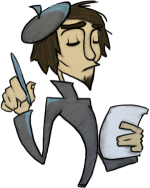I’ve been enjoying a wonderful little book called Steal Like An Artist by Austin Kleon. In the book, Kleon points out that all creative works of art are built on something that has come before. As I was reading, every page made me think about my own songwriting process. My next thought was: I really want to share this with you.
Suggesting that someone “steal” sounds pretty awful. But no one here is suggesting that you actually crib someone else’s test answers or intellectual property. And no one is suggesting that you be anything less than your creative, authentic, wonderful Self. David Bowie used to refer to himself as a “a tasteful thief” and in an interview with Cameron Crowe he boasted, “The only art I’ll ever study is stuff that I can steal from.” I don’t think anyone could call David Bowie unoriginal.
It’s not stealing
So, let’s call what Bowie was doing “being inspired by”—using your knowledge, experience, intuition and, yes, really good taste to choose which techniques and ideas in someone else’s song you want to use as a foundation or inspiration for something new and different in songs of your own.
It doesn’t necessarily make creative work any easier. But you can use it to point the way forward or show you a goal to reach for. Youa re probably already doing it.





